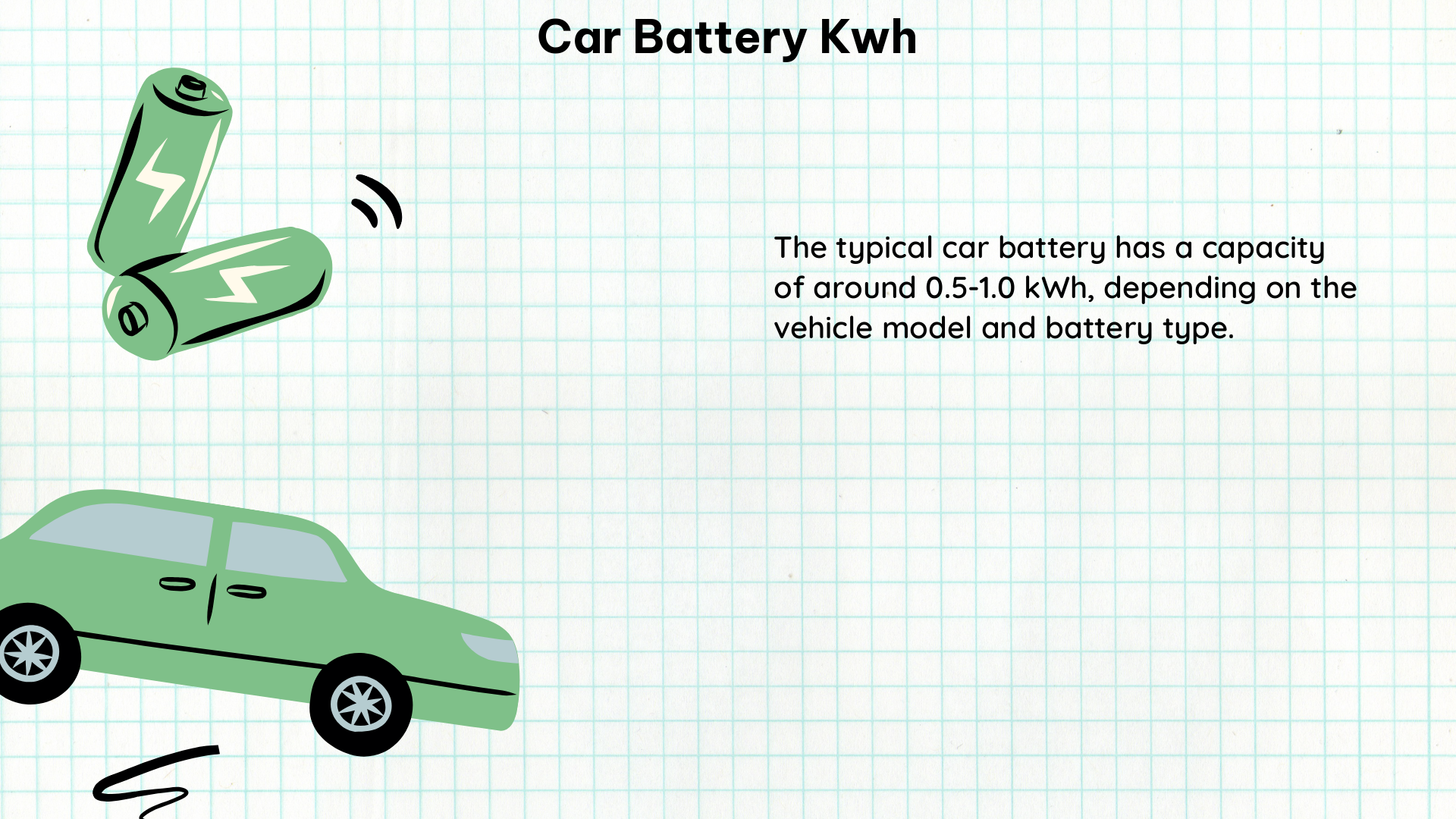The capacity, performance, and life cycle of an electric vehicle (EV) battery are crucial factors to consider when evaluating the suitability of an EV for a particular application. This comprehensive guide delves into the technical details of car battery kWh, providing a wealth of information to help you make informed decisions.
Understanding Car Battery Capacity
The capacity of an EV battery is typically measured in kilowatt-hours (kWh), which represents the amount of energy the battery can store and deliver to the electric motor. This capacity can vary significantly across different vehicle makes and models:
- Nissan Leaf: 40 kWh battery capacity
- Tesla Model S: Up to 100 kWh battery capacity
- Chevrolet Bolt EV: 66 kWh battery capacity
- Hyundai Kona Electric: 64 kWh battery capacity
The battery capacity directly impacts the vehicle’s range, with higher-capacity batteries generally providing longer driving distances on a single charge. For example, the Nissan Leaf with a 40 kWh battery has an EPA-estimated range of 226 miles, while the Tesla Model S with a 100 kWh battery can achieve up to 402 miles of range.
Evaluating Battery Performance

In addition to capacity, the performance of an EV battery is also a crucial consideration. This includes the battery’s power capability, efficiency, and lifetime.
Power Capability
The power capability of an EV battery is typically measured in kilowatts (kW) and refers to the maximum rate at which the battery can deliver power to the electric motor. This parameter is essential for determining the vehicle’s acceleration and high-speed performance. For example, the Porsche Taycan Turbo S has a peak power output of 560 kW, enabling it to accelerate from 0 to 60 mph in just 2.4 seconds.
Efficiency
The efficiency of an EV battery refers to the amount of energy that is lost during charging and discharging. This is an important factor in determining the overall energy consumption and range of the vehicle. According to a study on the Volkswagen ID.3, the battery pack can achieve an efficiency of up to 93%, meaning that only 7% of the energy is lost during the charge-discharge cycle.
Lifetime
The lifetime of an EV battery is typically measured in charge-discharge cycles and refers to the number of times the battery can be charged and discharged before its capacity begins to degrade significantly. This is an important consideration for long-term ownership and maintenance. Some EV manufacturers offer battery warranties that cover the battery’s capacity for a certain number of years or miles, such as the Nissan Leaf’s 8-year/100,000-mile battery warranty.
Analyzing Battery Life Cycle
The life cycle of an EV battery is also a crucial factor to consider, as it can have a significant impact on the environmental footprint of the vehicle.
Carbon Footprint
According to a report by the European Commission’s Joint Research Centre, the carbon footprint of an EV battery is largely determined by the manufacturing process, which accounts for around 70% of the battery’s total carbon emissions. The report also notes that the carbon footprint can vary widely depending on the battery chemistry, manufacturing process, and end-of-life management.
Recycling and Reuse
As EV adoption continues to grow, the importance of battery recycling and reuse will become increasingly crucial. Many automakers and battery manufacturers are exploring ways to extend the life of EV batteries, such as repurposing them for stationary energy storage applications after they are no longer suitable for vehicle use.
DIY Measurements and Monitoring
For those interested in DIY battery monitoring and testing, there are several tools and techniques available:
Battery Testers
Battery testers can measure the voltage, current, and capacity of an EV battery, providing valuable insights into its performance and health. These tools can be used to diagnose issues, track degradation, and optimize charging and discharging strategies.
Data Loggers
Data loggers can record the battery’s voltage, current, and temperature over time, allowing for in-depth analysis of the battery’s behavior and performance. This data can be used to determine the battery’s capacity, power capability, and efficiency.
Simulation and Modeling
Advanced simulation and modeling tools can be used to predict the performance and life cycle of EV batteries based on various operating conditions and usage patterns. These tools can help optimize battery management strategies and inform purchasing decisions.
By understanding the technical details of car battery kWh, including capacity, performance, and life cycle, you can make informed decisions about the most suitable EV for your needs and ensure that you get the most out of your investment.
References:
– Zhao, J., & Burke, A. F. (2022). Electric Vehicle Batteries: Status and Perspectives of Data-Driven Diagnosis and Prognosis. Batteries, 8(10), 142.
– Etxandi-Santolaya, M., Canals Casals, L. C., & Corchero, L. (2023). Estimation of electric vehicle battery capacity requirements based on synthetic cycles. Journal of Energy Storage, 36, 103507.
– Publications Office of the European Union. (2023). Rules for the calculation of the Carbon Footprint of Electric Vehicles. Luxembourg: Publications Office of the European Union.
– Wassiliadis, N., Steinsträter, M., Schreiber, M., Rosner, M., Nicoletti, L., Schmid, F., Ank, M., Wildfeuer, O., Schneider, L., Koch, J., König, A., Glatz, A., Gandlgruber, J., & Kröger, T. (2022). Quantifying the state of the art of electric powertrains in battery electric vehicles: Range, efficiency, and lifetime from component to system level of the Volkswagen ID.3. Journal of Power Sources, 526, 230642.

The lambdageeks.com Core SME Team is a group of experienced subject matter experts from diverse scientific and technical fields including Physics, Chemistry, Technology,Electronics & Electrical Engineering, Automotive, Mechanical Engineering. Our team collaborates to create high-quality, well-researched articles on a wide range of science and technology topics for the lambdageeks.com website.
All Our Senior SME are having more than 7 Years of experience in the respective fields . They are either Working Industry Professionals or assocaited With different Universities. Refer Our Authors Page to get to know About our Core SMEs.